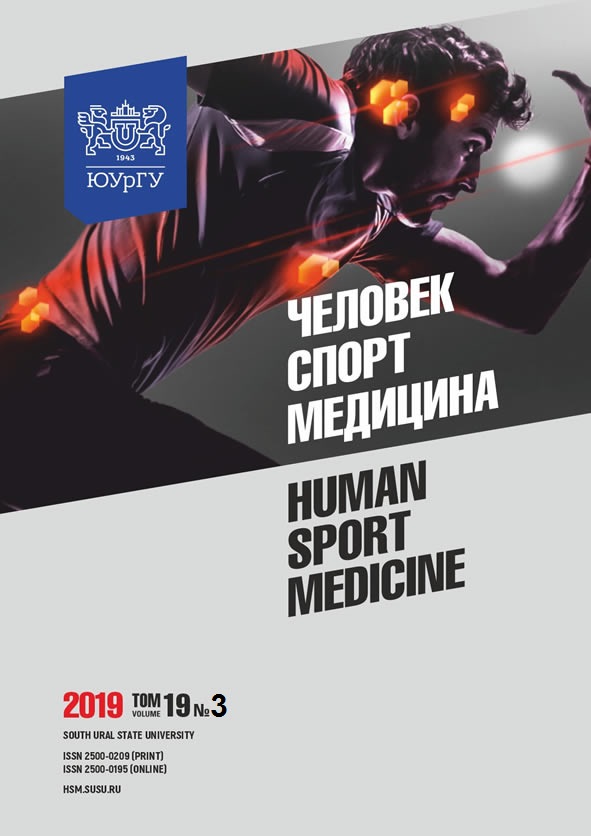BIOMECHANICAL, PHYSIOLOGICAL AND AGE-RELATED FEATURES OF PERSONIFICATION AND INDIVIDUALIZATION DURING QUICKNESS AND SPEED-STRENGTH QUALITIES ENHANCEMENT IN YOUNG WEIGHTLIFTERS
Abstract
Aim. The article deals with studying biomechanical, physiological, and age-related features in young weightlifters during quickness and speed-strength qualities enhancement. Materials and methods. The study was conducted at the precompetitive stage of preparation. Weightlifters aged 14–15 and 16–17 years (n = 15) participated in the experiment. Body composition was studied with the Tanita BC-418AA computer analyzer. The spatial characteristics of spine segments were investigated with the help of the MBN-Scanner computer equipment. Postural studies were conducted with the stabilometric systems produced by MBN Russia. Blood flow spectral analysis was performed using impedance rheography (the Centaur diagnostic system). Results. The body composition of young weightlifters was varied in the following range: muscle mass – 52.4–53.9%, fat mass – 9.0–10.2%. BMI was equal 25.64 kg/m2. The data of the orthostatic test in young weightlifters revealed significant changes in HR, total spectrum power (TSP), and stroke volume regulation (SV) in the experimental group (p < 0.05). In the control group, HR changes were higher than in the experimental group. In 50% of athletes from the groups of sports performance enhancement, eukinetic blood flow was revealed, in 32% – hypokinetic, and in 18% – hypertonic. After a year of training, a consistent increase in stroke volume (SV) was registered, as well as a decrease in HR, peripheral vascular resistance (PVR), heart index, and arterial blood pressure. Conclusion. The control system allows revealing in time the problems connected with weightlifters’ preparation, offering rehabilitation measures, and transforming the training process itself (its orientation, volume, intensity) to optimize body functioning in young weightlifters.
References
References on translit
Copyright (c) 2019 Human. Sport. Medicine

This work is licensed under a Creative Commons Attribution-NonCommercial-NoDerivatives 4.0 International License.















